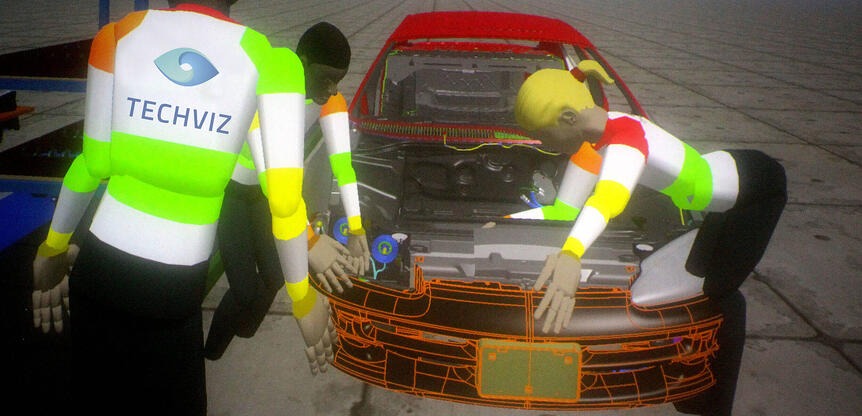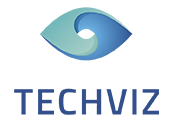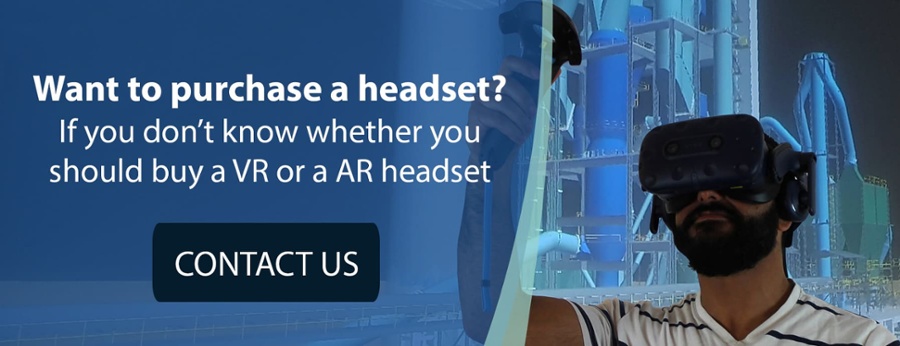-1-1.jpeg?width=856&height=406&name=20180607_141404_retouch%C3%A9e-(4)-1-1.jpeg)
In 2080, one third of the European population will be 65 or older. For smart factories through the path of the Industry 4.0, it means having a “good” workplace is not enough, and its design should anticipate the preservation of the operator’s wellbeing. Therefore, the working environment for modern manufacturing workplaces must allow for the best productivity and quality outputs, while offering a secure environment for the workers.
This is why human factors and ergonomics must be integrated in industrial design process, in order to create an ergonomic workstation. Other use cases can benefit from the integration of the human factor in your design, especially when you want to design a new product or an installation run by humans.
One of the best technologies to render accurate human-centered design is Virtual Reality. But there are different methods to recreate human factors depending on your use case. Should you track the motions of a real operator, or have them simulated with an algorithm? In this article, we will review what is integration of human factors in VR, and see why you should rely on a virtual manikin and/or combining tracking devices with VR technology to get ergonomically correct workstations.
The importance of good ergonomics and human factors in the design process
A manufacturing workplace designed with the aid of immersive virtual reality offers several advantages for industries:
- Saving money because you don’t require expensive physical prototypes
- Saving time and resources because you can test many different configurations
However, designing effective workstations has other important requirements. Analyzing the body postures and travels in a three-dimensional model or in a virtual reality experience is a key issue for understanding the potential risk factors for the worker. Some moves might not be good for the operator’s health, either because of the aging of the working population or the danger of developing work-related musculoskeletal injuries. Workstation ergonomics need to integrate the human factor to limit discomfort and fatigue for the workers
The goal of ergonomic studies is to ensure a safe and effective environment for the operator or the consumer. They deal with the adjustment of tools, machines, environment, and operating conditions, while considering the human factor. With interactive virtual reality tools, designers can see in a real-like environment how to respect the requirements for safety and ease-of-use.
Virtual reality is a computer-generated environment that creates a fully immersive experience for the user, generally with a standalone VR headset or a mounted display tethered to a powerful computer. In the industrial context, the virtual experience will aim to recreate the physical world and enable the user to interact with virtual objects representing products, machines or factories. A VR simulation of your workplace, or of large-scale product will help you to:
- Manage safety and health requirements for a machine or workstation design
- Test for the reachability of the different commands of an instrument panel (for a car or an aircraft cockpit)
- Anticipate the ergonomics of a new product by tracking the body of a user
Now, there are two methods for human integration in 3D design. Either you use an algorithm and a virtual manikin to completely simulate the operator in a virtual environment, or you use real data from a tracking system and you use it to create the virtual operator. Using one method or the other (or both) will be entirely dependent on your use case.
Using a virtual manikin for ergonomic design studies

In some situations, even within a virtual world, combining a virtual reality system and a tracking system is not highly effective. For example, the wearable devices can restrict or disturb the workers natural motions. Therefore, to accurately predict the 3D poses of a human body, you can use a virtual manikin.
For example, with TechViz Virtual Manikin feature, you can:
- Visualize the manikin directly in your 3D model
- Define the morphology of the virtual character
- Move and steer the Manikin using a handle
- Constraint the movements of the operator to fit your requirements
- Quickly configure and switch between different basic postures
Because it does not depend on a human input, it allows you to test as many configurations as you want automatically. It means the data will only depend on the algorithm you use, and not on the user input, or the hardware you use (whether your virtual reality headset is an Oculus Rift, an HTC Vive or a Samsung Gear VR).
The accuracy of the manikin can be lacking for complex 3D poses in constrained environment, such as factories. Virtual manikins are ideal to simulate many configurations of the “human-machine” interactions in the virtual environment and will limit the cost of ergonomic assessment. They allow you to test for dangerous situations without threatening the health of the operator, which may not be possible with a body tracking suit.
Monitor body poses with tracking systems
Motion tracking is a technology that aims to collect information on the VR user’s movements. In the context of smart factories, they represent excellent assessment tools for ergonomics and human factors. Motion controllers record the movements of the worker during his manufacturing and assembly task. Then engineers can immerse themselves in their data and analyze it from a productive and ergonomic viewpoint by using virtual reality.
![]()
There are several wearable devices that can be added to an augmented and virtual system, depending on what movements you want to monitor. The most common tracking technologies are:
- Full-body tracking
- Hand tracking
- Finger tracking
- Eye Tracking
The integration of motion capture technologies in the industrial environment is relatively recent. These solutions are expensive and require meticulous and time-expensive procedures to setup. However, operators now perform complex and non-repetitive tasks. Their experience and wellbeing will be necessary to keep track and optimize the actual manufacturing process and anticipate the specialized training for the new operators. Which is why combining body-tracking devices and virtual reality technology will become a valuable system for any manufacturing plant working for the well-being of their workers.
There are other interesting use case involving the use of a body-tracking system and VR technologies, such as designing large scale products. By mirroring the movements of the user in VR, operability, assembly and maintenance operations can be tested from the earliest stages of product conception. Check-out our other use cases for more information.
TechViz is an augmented and virtual reality software thought for engineers. This software is ideal for companies working with CAD data visualization and large-scale 3D models. It is compatible with any all-in-one HMD or standalone virtual reality headsets, or any projection-based virtual reality systems (such as a CAVE or a PowerWall and virtual reality glasses). TechViz can work with more than 200 CAD applications. Other wearable technologies or sensory displays for motion-tracking can augment your virtual reality experience, like body-tracking suits from TEA, ART, X-Sens or the Teslasuit. Our software also offers other human integration features such as a virtual manikin to help you run body posture simulations automatically.
Want to know more about ergonomic benefits and human integration with a virtual reality experience? Check-out our other articles about virtual and augmented reality and workplace ergonomics:






 Back to Blog
Back to Blog




